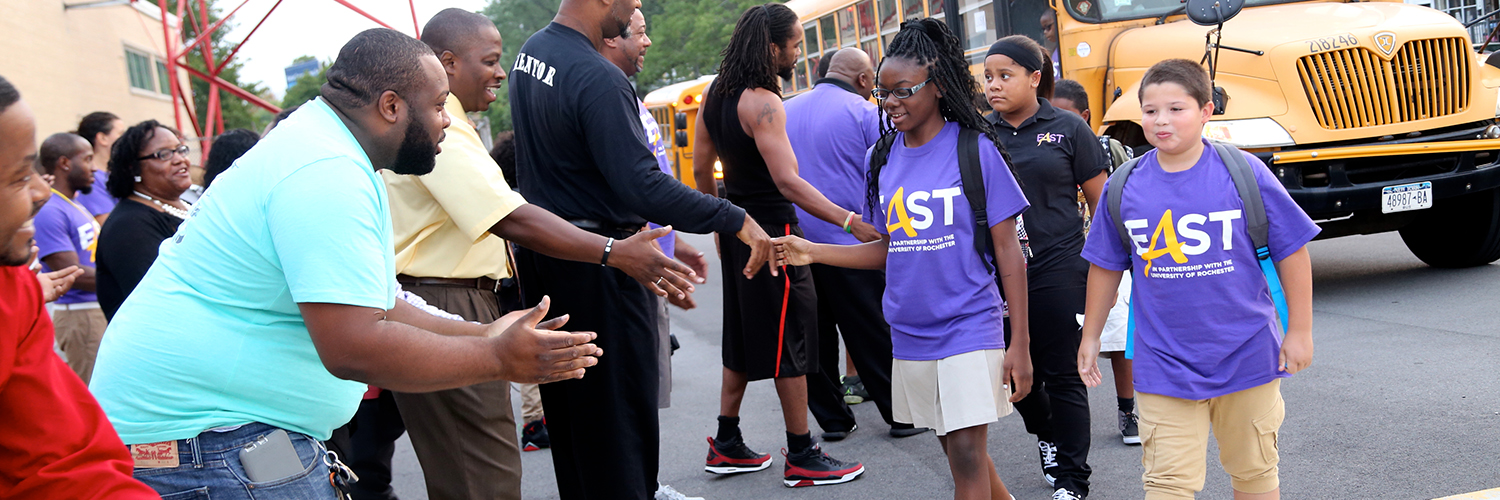
Practitioner Briefs
As a clearinghouse for research, the Center for Urban Education Success publishes practitioner briefs that address particular topics, questions, and problems pertinent to urban education. In preparing these briefs, we draw upon our network with other urban secondary schools to help understand how these schools are successfully addressing the challenges and questions they confront. Then, we bring these “on the ground” successes into conversation with research literature to produce a series of briefs that support the work researchers and practitioners are doing in urban education.
Standards-Based Grading: History, Practices, Benefits, Challenges, and Next Steps
Standards-Based Grading is an assessment system that focuses on student progress toward clearly defined learning goals. This approach differs from the familiar and predominant traditional grading system, in which teachers take an average of scores from a wide variety of assignments to produce a letter grade for report cards.
This brief explores research that: reviews the historical context of grading, defines SBG, examines the practices, benefits, and challenges of SBG, and recommends the next steps for educators considering a transition to SBG.
Bullying in School: Prevalence, Contributing Factors, and Interventions (October, 2018)
Bullying in School: Summary of Findings (October, 2018)
Bullying, which involves an intention to do harm, repetition and a power imbalance between bully and victim, has become a public health concern not only in the U.S. but worldwide. With an understanding of bullying as a violation of a child’s basic human rights, this two-part brief explores the phenomenon (history, prevalence, risk factors, and consequences) in Part I and reviews research-based interventions in Part II, with a focus on school settings. Alongside the increased societal and research attention to bullying, a related and subsequent phenomenon of cyberbullying has emerged, thus stimulating and refocusing public awareness while also eliciting a heightened sense of fear and powerlessness among parents and educators. This brief’s analysis of empirical research aims to provide a balanced and accurate depiction of bullying in all of its forms. A resource guide for teachers and practitioners is included. The work involved in preparing this brief was supported by a grant by the Moskowitz Family Foundation. The opinions and conclusions reported, however, are solely the author’s.
Best Practices for Educating English Language Learners: History, Controversy, and a Path Forward (September, 2018)
Educating English Language Learners (ELLs), one of the many ways to identify students for whom English is not a first language, has a complicated history, characterized by competing theoretical perspectives, a relatively small pool of research, numerous, changing policy instantiations, and compounding issues surrounding ELLs’ sizable and rapidly growing presence in the U.S. education system. This brief pieces apart the challenges, history, theory, research, and instructional best practices through a review of literature. A resource guide for researchers and practitioners is included.
Becoming Restorative: Three Schools Transitioning to a Restorative Practices Culture (October, 2017). As we continue our research in Restorative Practices (RP), The Center for Urban Education Success has been visiting schools that are making the shift to a restorative practices culture. Located in the urban districts of New York City and Rochester, N.Y, these schools have embraced a restorative philosophy, one that is based on a set of values quite different from those of punitive discipline –still prevalent in K-12 schools today, especially in urban areas. Building on the research review featured in our last brief, Restorative Practice: History, Successes, Challenges & Recommendations, this brief highlights the voices of teachers, administrators, social workers, a university professor and a student who are experiencing their schools’ culture change first hand. Their stories attest to the benefits and challenges of transitioning to a restorative culture.
Restorative Practices: History, Successes, Challenges & Recommendations (June, 2017)
One of the major initiatives the UR-East EPO is a Restorative Practices (RP) approach to discipline and school culture. And while RP has worked successfully to transform schools, questions and doubts still persist about its effectiveness. This brief – a literature review – serves as a guide to research that supports RP as a viable approach. In addition to reviewing RP evidence, it also includes a review on punitive discipline. The brief concludes by identifying challenges and recommendations for schools interested in implementing RP.
The Question of Incorporating 6th Grade into Middle and High School Configurations (May, 2017)
Sometimes the Center for Urban Education Success (CUES) produces briefs “on demand” to support timely initiatives happening at East. This brief is one such example. It was created to prepare East’s Superintendent, Dr. Shaun Nelms, as he proposed a formal partnership with a nearby elementary school to the School Board. This brief was a collaborative effort of the CUES research team and covers evidence-based advantages, disadvantages, and ongoing conversation about how 6th grade fits into secondary school configurations.
Attendance Up Close: Reflecting on School Visits (February, 2017)
As a companion to our first brief on attendance, this brief documents a series of visits the Center for Urban Education Success made to several of the schools we identified as exemplars (Marsh, 2016). It uses the categories established in the first brief to organize and synthesize our reflections on meeting students and staff and touring buildings. The data presented here provide a window into the idiosyncratic, context-dependent practices and cultures of schools that are demonstrating success with attendance.
Attendance Practices That Work: What Research Says, What Practitioners Say (December 2016)
In our effort to learn about best practices in attendance, the Center for Urban Education Success (CUES) has been having conversations with principals and assistant principals at urban high schools around New York State. These schools have three things in common: 1) the vast majority of their students are classified as economically disadvantaged; 2) the vast majority of their students represent minority groups; and 3) the schools have notably high attendance figures. We wanted to find out what was behind their successful attendance outcomes. This brief synthesizes several schools’ stories and integrates them with academic research literature, thus providing a comprehensive research brief for those interested in best practices in attendance.
